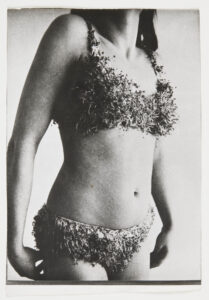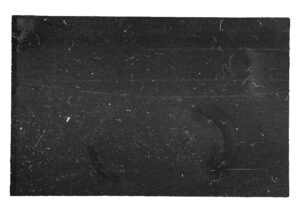
Peter Rónai, MOTIF HUNTER, 1983–1989

Dezider Tóth, MASKS, 1989

Dezider Tóth, FUNERAL CARD BEHIND THE AVANT-GARDE, 1976

Eva Koníček, 120 × 100 CM, SHEPS, ACRYLIC, CANVAS, BLIND FRAMES, 45 × () (FROM THE CYCLE HERE YOU STARE), 2013

Vladimír Havrilla, SIMPLE FIGURE, 1974

Ľubomír Ďurček, MR. VIHORLAT ATACKING AGAIN, 1990

Ľubomír Ďurček, LAST ASSEMBLY, 1989

Orshi Drozdik, INDIVIDUAL MYTHOLOGY: GETTING OUT OF THE CAGE, 1976–77

Károly Halász, PRIVATE BROADCASTING, 1974

Ilona Németh (co-author: Marián Ravasz), BRING BACK NATURE!, 1991

Ilona Németh (co-author: Marián Ravasz), BRING BACK NATURE!, 1991

Sándor Pinczehelyi, XY I–II., 1973–1975

Sándor Pinczehelyi, COBBLESTONE IS THE WEAPON OF THE PROLETARIAT, 1974

Bálint Szombháty, HAMMER AND SICKLE (SRP I ČEKIĆ), 1974–2014

Bálint Szombháty, VIDEO PROJECT, 1973–1974

Bálint Szombháty, TESLA IS GOING TO SPACE, 2016

Bálint Szombháty, LÁSZLÓ BEKE WITH THE T-SHIRT OF SZOMBATHY ART, 1981

Vladimír Havrilla, BARBARELLA, 1970–2024

Vladimír Havrilla, THE SECOND SIDE OF THE RECORD (NO. 64), 1981

Veronika Rónaiová, A–Z, 1991–1995

Peter Bartoš, UNTITLED (SO-CALLED SITUOART), 1969–1991

Peter Bartoš, PROTECTING SLOVAKIA FROM A BAD PROJECT, 2016

Peter Bartoš, CZECHIA + SLOVAKIA, 1993

Peter Bartoš, IN THE CZECH LANDSCAPE, 1975

Károly Halász, STRUCTURES, 1979–1980

Miloš Laky, Stano Filko, Ján Zavárský, Peter Bartoš, Juraj Meliš, Rudolf Sikora, Róbert Cyprich / Hervé Fischer, Dezider Tóth, Jana Želibská, SYMPOSION 74 – INFORMATION ABOUT A FRIENDLY MEETING, 1974

Rudolf Sikora, TRIBUTE TO THE INTERSECTION OF THE MERIDIAN AND THE PARALLEL, 1971–1975

Ryszard Waśko, 30 SOUND SITUATIONS, 1975

Ryszard Waśko, A→B→A (FROM A TO B AND BACK TO A), 1974

Juraj Meliš, IDEA, 1975

GRUPA ZERO-61, 1969

Paweł Jarodzki, ROLL ON, 1985

Paweł Jarodzki, JOSEPG BEUYS – I LOVE YOU, 1985

Paweł Jarodzki, UNTITLED, 1980s

Andrzej Dudek-Dürer, META TRIP X, 1990

Jerzy Kosałka, SZOPKA GDAŃSKA, 2019

Barbara Kozłowska, CIĄGŁE SPADANIE, 1968

Zbigniew Makarewicz, BYL LAS, 1979

Stanisław Dróżdż, BEZ TYTUŁU [MIKRO – MAKRO], 1971-73

Stanisław Dróżdż, BEZ TYTUŁU [TAK NIE], 1970-77

Stanisław Dróżdż, OPTIMUM (MINIMAMUM – MAXIMUM), 1968-77

Wojciech Bruszewski, JĘZYK BALETOWY, 1973

Wojciech Bruszewski, TAŃCZY WOJCIECH BRUSZEWSKI, 1973

Józef Robakowski, O PALCACH, 1982

Józef Robakowski, MÓJ TEATRE, 1985

Józef Robakowski, DLA WARSZTATU FORMY FILMOWEJ: BLIŹEJ – DALEJ, 1984

Józef Robakowski, ŁÓDŹ KALISKA, 1986

Teresa Murak, ZASIEW [KOLEKCJA ROŚLINNA], 1975

Teresa Murak, ZASIEW [KOLEKCJA ROŚLINNA], 1975

Barbara Kozłowska, CIĄGŁE SPADANIE, 1968–1977

Jarosław Kozłowski, ĆWICZENIA Z MIERZENIA, 1969-2023

Grzegorz Klaman, WIELKA CZARNA GŁOWA, 1988

Grzegorz Klaman, KORYTO, 1988

Grzegorz Klaman, OBELISKY, 1988

Grzegorz Klaman, WIEŻA Z KOŚCI SŁONIOWEJ, 1990

Grzegorz Klaman, POLEND, 2006

Anna Kutera, FEMINIST PAINTING, 1973

Zbigniew Libera, WARIAT, 1984

Zbigniew Libera, WARIAT, 1984

Jerzy Truszkowski, TRIPTÝCH NARZĄD (NARZĄD NICOŚĆI), 1984

Jerzy Truszkowski, TRIPTÝCH NARZĄD (NARZĄD KOBIECI), 1984

Jerzy Truszkowski, TRIPTÝCH NARZĄD (NARZĄD MĘSKI), 1984

Ewa Ciepielewska, WEIRD LANDSCAPE, 1985

Alicja Żebrowska, PRZYPADKI HUMANITARNE, 1994

Alicja Żebrowska, PRZYPADKI HUMANITARNE, 1994

Bozena Grzyb-Jarodzka, PAWEŁ, 1993

Jerzy Kosałka, OCET [Z CYWKLU POSLKI POP-ART], 1986

Laďa Gažiová, UNTITLED, 2018

Laďa Gažiová, UNTITLED, 2016

Laďa Gažiová, UNTITLED, 2018

Laďa Gažiová, UNTITLED, 2016

Paweł Jarodzki, JOSEPH BEUYS – I LOVE YOU, 1986

Anna Daučíková, MOSCOW DIARY, 1989

Anna Daučíková, MOSCOW DIARY, 1989

Anetta Mona Chisa & Lucie Tkáčová, WHEN LABOUR BECOMES FORM, 2007

Bača Dalibor, CZ_SK_HU_D_PL, 2014 © Dalibor Bača

Bača Dalibor, CZ_SK_HU_D_PL, 2014 © Dalibor Bača

Alexey Klyuykov & Ladislava Gažiová, PORTRAIT OF FATHER WITH VIOLIN, 1939/2017

Vasil Artamonova & Alexey Kluykov, GARAGE, 2006

Ivars Gravlejs, KARLIS KALBERZS, 1912

Ivars Gravlejs, TOMS ROZEMBAUMS, 1963

Alice Nikitinová, BANNERS, 2010

Peter Rónai, ABC, 1988

Peter Rónai, ART OF THE 60′, 1988

Peter Rónai, BOLERO, 1989

Peter Rónai, DADA METRONOME, 1988

Peter Rónai, FORMATIONS, 1988

Peter Rónai, FORMATIONS (PC remake), 1998

Peter Rónai, OH OH OH, 1988

Peter Rónai, OBJECT SUBJECT, 1988

Peter Rónai, OBJECT ACTION, 1989

Peter Rónai, POCKET ART, 1989

Peter Rónai, PRINCIPLES OF MODERN ART, 1988

Erik Sikora, INVENTION OF NAVIGATION, 2007

Sláva Sobotovičová, SEARCHING FOR 1234, 2005
